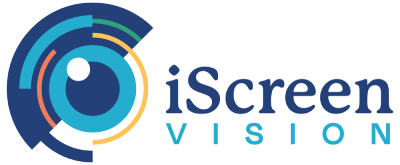Standard vision screening charts (sometimes commonly called eye test charts or sight test charts, or called by their medical name, Snellen charts) are used to test visual acuity, or how well a child sees. Eye charts which are used properly can detect reduced visual acuity (how well a child sees), which may be an indication of common refractive errors such as hyperopia, myopia or astigmatism. However, eye charts have limitations compared to other eye tests for children (which might also be called children eye test, school eye test, sight test, or preschool eye test), including testing with the iScreen Vision Screener 3000 photoscreener.Vision charts require a verbal response from a child, while iScreen Vision does not, meaning iScreen Vision can be used on children as young as 1 year old. In addition, while eye charts may be reliable in detecting whether a child is near-sighted, or has myopia, studies have demonstrated that they are unreliable in detecting if the child is far-sighted or has astigmatism. Moreover, visual acuity tests with an eye chart also don’t directly detect strabismus or media opacities such as cataracts.
Join more than 1,000 pediatricians in improving patient outcomes with iScreen Vision.
